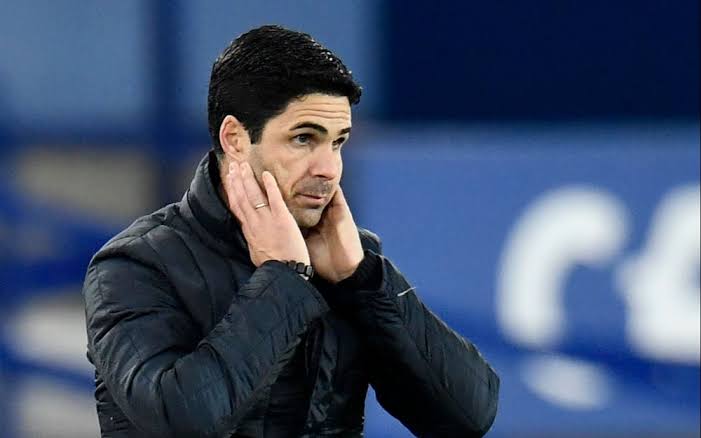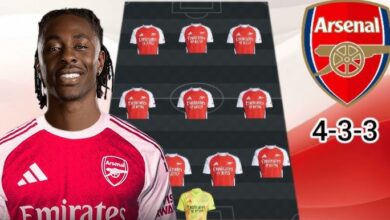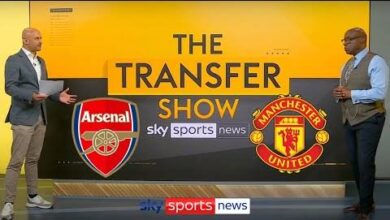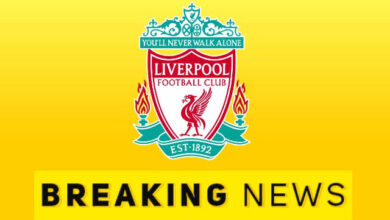Arsenal instantly regretted signing Sweden international after spotting serious injury during medical

Arsenal Football Club has experienced numerous transfer sagas throughout its illustrious history, but few have been as bizarre, frustrating, and ultimately embarrassing as the Kim Källström affair of January 2014. This is a story that perfectly encapsulates the chaos and desperation that can consume football clubs during the final hours of a transfer window, and serves as a cautionary tale about the perils of rushed decision-making in the high-stakes world of professional football.
The irony of Arsenal’s Kim Kardashian “curse” in 2023 – where the reality TV star’s appearance at the Emirates Stadium seemingly coincided with the club’s title challenge collapse – pales in comparison to the earlier Kim K debacle that occurred nearly a decade prior. While the Kardashian incident was largely superstitious folklore, the Kim Källström transfer represented a very real, very costly mistake that exposed the club’s desperation and poor planning in equal measure.
To understand the magnitude of this transfer blunder, we must first examine the circumstances that led Arsenal to this desperate position. The 2013-14 season had begun with genuine optimism at the Emirates Stadium. Under Arsène Wenger’s guidance, the Gunners had assembled a squad that looked capable of challenging for their first Premier League title since the unbeaten “Invincibles” campaign of 2003-04.
Arsenal’s start to the season was nothing short of spectacular. They sat proudly at the summit of the Premier League table, playing the kind of fluid, attacking football that had made them famous under Wenger’s stewardship. The team appeared to have found the perfect balance between youth and experience, with players like Mesut Özil providing the creative spark that had been missing in previous seasons.
However, football has a cruel way of testing even the most carefully laid plans. As the season progressed into the crucial winter months, Arsenal’s squad depth – always a concern under Wenger’s frugal approach to the transfer market – began to show alarming cracks. The injury gods, it seemed, had decided to unleash their fury upon the North London club at the worst possible moment.
Jack Wilshere, the jewel of Arsenal’s academy and a player many believed would become the cornerstone of England’s midfield for years to come, succumbed to one of the many injury setbacks that would ultimately define his career. His absence left a significant void in Arsenal’s midfield, removing both his technical ability and his understanding of Wenger’s tactical system.
Aaron Ramsey, who had been enjoying a remarkable renaissance and was in the form of his life, also found himself on the treatment table. The Welsh midfielder had been scoring goals at an unprecedented rate and his box-to-box energy had become integral to Arsenal’s high-tempo style of play. His injury represented not just a loss of quality, but a fundamental shift in how the team would need to approach matches.
As if these injury setbacks weren’t damaging enough, Mathieu Flamini – the defensive midfielder who had returned to Arsenal as a free agent and provided much-needed steel in the center of the park – received a suspension that would keep him out of crucial fixtures. Flamini’s absence was particularly significant because he offered something different from Arsenal’s other midfield options: physicality, defensive awareness, and the kind of competitive edge that Wenger’s teams were often accused of lacking.
Faced with this perfect storm of unavailability in midfield, Arsenal’s management found themselves in an increasingly precarious position. The January transfer window, often viewed as a necessary evil by clubs who prefer to conduct their business in the summer, suddenly became a lifeline. With the Premier League title within their grasp, the club could not afford to let this opportunity slip away due to squad limitations.
The name that emerged from Arsenal’s scouting network and transfer discussions was Kim Källström, a Swedish international midfielder who, on paper, appeared to offer exactly what the club needed. At 31 years old, Källström was hardly a long-term solution, but his profile suggested he could be the perfect short-term fix for Arsenal’s midfield crisis
Källström’s resume was undeniably impressive. He had earned well over 100 caps for the Swedish national team, representing his country in multiple European Championships and World Cups. This international experience alone marked him as a player who could handle pressure and perform on the biggest stages – qualities that would be essential for a title run-in.
Perhaps even more compelling was his club career trajectory. Källström had spent five successful seasons with Olympique Lyonnais, one of France’s most prestigious clubs. During his time in Lyon, he had won Ligue 1 twice and regularly competed in the Champions League, often progressing deep into the tournament. This experience of playing at the highest level of European competition was exactly what Arsenal needed as they prepared for the final stretch of their title challenge.
The Swedish midfielder was known for his versatility, capable of playing in various midfield roles depending on tactical requirements. He could operate as a defensive midfielder, providing the kind of protection that Flamini offered, or push forward into more advanced positions where his passing range and set-piece ability could be utilized. This flexibility was particularly appealing to Wenger, who had always favored technically gifted players who could adapt to different systems.
From a leadership perspective, Källström also offered something that Arsenal’s young squad perhaps lacked. His experience in high-pressure situations, both internationally and in European competition, could provide valuable guidance to younger players who were experiencing their first genuine title challenge. The psychological benefits of having a seasoned professional in the dressing room during crucial moments cannot be overstated.
The transfer process moved swiftly, as is often the case with January deadline day deals. Spartak Moscow, Källström’s current club, were reportedly amenable to the loan arrangement, understanding that the player was eager to return to Western European football for what might be his final opportunity to compete at the highest level.
Källström arrived in London and underwent the standard medical examination that all players must pass before completing their transfer. This process, typically thorough and comprehensive, is designed to identify any potential issues that could affect a player’s ability to contribute to their new team. It represents the final safeguard against signing players who may not be physically capable of meeting the demands of their new role.
However, what transpired during Källström’s medical examination would become one of the most controversial aspects of this entire saga. The medical staff at Arsenal discovered something during their scans that should have immediately raised red flags: a damaged vertebrae in the player’s back. This was not a minor knock or a slight concern – it was a significant structural issue that would require time and careful management to heal properly.
The injury had occurred in the most mundane of circumstances. While on warm-weather training with Spartak Moscow in Abu Dhabi, Källström had participated in a beach football session – a common recreational activity for professional players during training camps. During this seemingly innocent game, he had suffered the back injury that would prove so problematic. The irony that a professional footballer’s career could be derailed by beach football was not lost on observers.
Despite the clear evidence of this injury, Arsenal made a decision that would haunt them for months to come. Rather than calling off the deal or seeking alternative options, the club’s management chose to proceed with the transfer. The reasoning behind this decision appears to have been driven by a combination of factors: the pressure of deadline day, the lack of alternative options, and perhaps a dangerous optimism about the player’s recovery timeline.
The true extent of Arsenal’s mistake became apparent almost immediately after the transfer was completed. The club was forced to make the embarrassing admission that their new signing would be unavailable for selection for approximately six weeks – a timeline that would take him well beyond the period when he was most needed.
This revelation sparked immediate criticism from fans, media, and football analysts who questioned how a club of Arsenal’s stature could make such a fundamental error. The fact that the injury was discovered during the medical examination only added to the sense of bewilderment surrounding the decision to proceed with the transfer.
Arsène Wenger, typically philosophical in his approach to adversity, was unusually candid about the club’s mistake. In a rare moment of public self-reflection, he admitted that the decision to sign Källström despite the injury was one he regretted. “It crossed my mind to not do the deal,” Wenger confessed, revealing the internal struggle he had faced as the transfer deadline approached.
The manager’s explanation of the circumstances surrounding the decision provided insight into the chaotic nature of deadline day transfers. “I wouldn’t have signed him if we had another two or three days, but it was on Friday at 5pm,” Wenger explained, highlighting how time pressure had contributed to the poor decision-making process.
The club’s attempts to establish exactly how the injury had occurred led to some uncomfortable questions about due diligence and communication between clubs. “We need to establish the real truth. He arrived and had fallen on his back two days before,” Wenger stated, suggesting that there may have been some confusion or lack of transparency about the timing and nature of the injury.
The financial aspects of the Källström transfer added another layer of embarrassment to an already problematic situation. Arsenal found themselves in the unusual position of paying wages to a player who could not contribute to the team, essentially throwing money away during a crucial period of the season.m5
However, the club’s management did manage to negotiate some form of damage control with Spartak Moscow. Recognizing that the injury had occurred while Källström was still technically their player, Spartak agreed to share the financial burden of the first six weeks of his wages. This arrangement, while providing some relief to Arsenal’s finances, did little to address the fundamental problem of having signed an injured player.
Wenger’s comments about the financial arrangement revealed both pragmatism and a hint of desperation: “We accepted to share the costs, so they will pay him for the first six weeks of his wages.” This admission highlighted how the club had been forced into an uncomfortable negotiating position by their own poor decision-making.
The manager’s attempt to maintain some optimism about the situation – “There’s a possibility he will not play, but also a possibility he will score a vital winning goal” – seemed almost desperate in its hopefulness. This comment would later prove to be somewhat prophetic, though not in the way that Wenger had originally envisioned.
When Källström finally returned to fitness and made his debut at the end of March 2014, the context of Arsenal’s season had fundamentally changed. The title challenge that had seemed so promising in January had effectively evaporated, with the team having dropped crucial points during the Swedish midfielder’s absence. By the time he was available for selection, the mathematical possibility of winning the Premier League had become increasingly remote.
The timing of his return also coincided with other players coming back from injury, most notably Mathieu Flamini, whose suspension had been one of the original catalysts for the Källström signing. This meant that the specific need that had driven the transfer was no longer as pressing, rendering the entire exercise somewhat pointless from a tactical perspective.
Källström’s actual contributions to the team during his brief Arsenal career were limited but memorable. He made just seven appearances for the club, a remarkably small number given the circumstances that had led to his signing. Each appearance served as a reminder of the chaotic decision-making that had brought him to North London in the first place.
While Källström’s Premier League contributions were minimal, his most significant moment in an Arsenal shirt came in the FA Cup semi-final against Wigan Athletic. In a match that would prove crucial to Arsenal’s season, the Swedish midfielder found himself thrust into the spotlight in the most dramatic of circumstances.
The semi-final had been a tense affair, with neither team able to find a decisive advantage during regular time or extra time. As the match headed to a penalty shootout, Källström found himself among the players tasked with determining Arsenal’s fate from the spot. The pressure of the moment – a Cup semi-final, at a neutral venue, with a place in the final at stake – represented exactly the kind of high-pressure situation that his experience was supposed to help navigate
When his turn came, Källström stepped up and confidently dispatched his penalty past Wigan goalkeeper Scott Carson. The shot was struck with authority and precision, demonstrating the kind of composure that comes from years of experience in crucial moments. In that single moment, he provided a glimpse of why Arsenal had been attracted to him in the first place
The penalty shootout victory secured Arsenal’s place in the FA Cup final, where they would face Hull City. For Källström, it represented a moment of personal vindication – proof that his signing had not been entirely without merit. However, the broader context of his Arsenal career meant that this moment of success was overshadowed by the circumstances that had brought him to the club.
Despite playing a crucial role in the semi-final victory, Källström was not selected for the FA Cup final against Hull City. This decision, while perhaps understandable from a tactical perspective, seemed to symbolize the strange nature of his entire Arsenal experience. He had been signed to address a specific need, missed the period when he was most needed, returned when that need was less pressing, contributed to reaching the final, but was then deemed unnecessary for the final itself.
Nevertheless, as a member of the squad that had progressed through the tournament, Källström was entitled to a winner’s medal when Arsenal lifted the FA Cup. The trophy represented the club’s first piece of silverware in nine years, ending a drought that had become increasingly burdensome for players, fans, and management alike.
Källström personally, the winner’s medal represented a remarkable souvenir from what had been a bizarre six-month experience. Few players can claim to have had such a strange introduction to a new club, yet still ended up with a major trophy to show for their efforts. The medal serves as a tangible reminder of both the success and the chaos that defined his time at Arsenal.
The Källström transfer saga highlighted several important lessons about modern football transfer practices and the dangers of deammnn̈dline day desperation. Perhaps most importantly, it demonstrated how time pressure can lead to poor decision-making, even at the highest levels of professional football.
The incident also revealed the importance of thorough medical examinations and the need for clubs to be willing to walk away from deals when significant issues are discovered. Arsenal’s decision to proceed despite clear evidence of injury set a dangerous precedent and suggested that the pressure to complete transfers can sometimes override basic common sense.
From a broader perspective, the saga illustrated the risks associated with leaving squad planning until the final days of a transfer window. Had Arsenal addressed their midfield depth issues earlier in the window, they might have had more time to properly evaluate alternatives and avoid the desperate decision-making that led to the Källström signing.
Fast forward to the present day, and Arsenal finds itself under the management of Mikel Arteta, who was actually a teammate of Källström during that infamous 2014 period. Arteta’s experience of witnessing the chaos and poor planning that led to the Källström saga has likely influenced his approach to transfer planning and squad management.
Under Arteta’s leadership, Arsenal has adopted a more methodical and strategic approach to transfers, with deals typically planned well in advance and medical examinations treated as non-negotiable barriers to completion. The club’s recent transfer activities suggest that the lessons learned from the Källström experience have been absorbed and implemented.
As Arsenal continues to rebuild under Arteta, with rumors of potential signings like Viktor Gyökeres circulating, the club’s approach to transfers appears far more measured and professional than it was during that chaotic January of 2014. The current management structure seems determined to avoid the kind of desperate decision-making that led to the Källström debacle.
The Kim Källström transfer saga remains one of the most peculiar episodes in Arsenal’s modern history. It serves as a perfect example of how even the most experienced and successful football clubs can make fundamental errors when faced with pressure and limited options. The incident highlighted the importance of proper planning, thorough medical examinations, and the willingness to walk away from deals when circumstances are not favorable.
While Källström himself was ultimately blameless in the situation – he was simply a professional footballer trying to make the most of an opportunity – his name has become synonymous with transfer window chaos and poor decision-making. The fact that he managed to contribute to Arsenal’s FA Cup success provides some redemption to the story, but it cannot entirely overshadow the embarrassment and confusion that surrounded his signing.
The saga also serves as a reminder of the human element in football transfers. Behind every deal are real people making decisions under pressure, often with incomplete information and limited time. The Källström transfer shows what can happen when these factors combine in the worst possible way.
Today, as Arsenal looks toward future transfer windows and continues its journey back to the top of English football, the lessons learned from the Källström experience remain relevant. The importance of proper planning, thorough due diligence, and the courage to make difficult decisions when necessary are all legacy elements of this bizarre chapter in the club’s history.
In the end, Kim Källström’s Arsenal career lasted just six months, but its impact on the club’s transfer policies and decision-making processes may well be felt for years to come. It stands as a perfect example of how not to conduct transfer business, wrapped up in a story that is equal parts embarrassing and entertaining – a true cautionary tale from the chaotic world of deadline day transfers.















